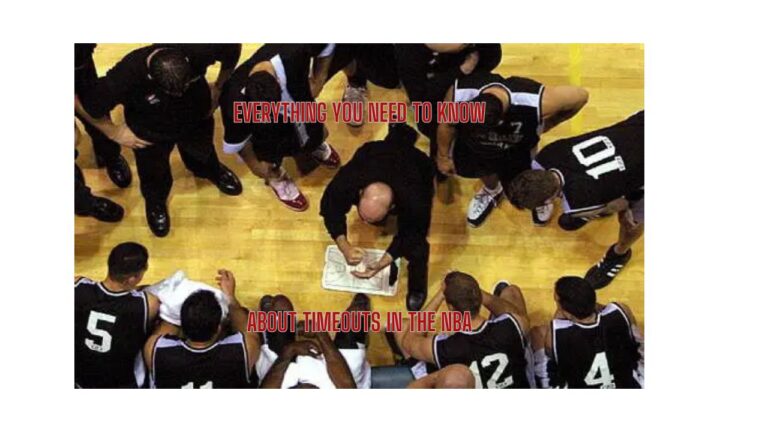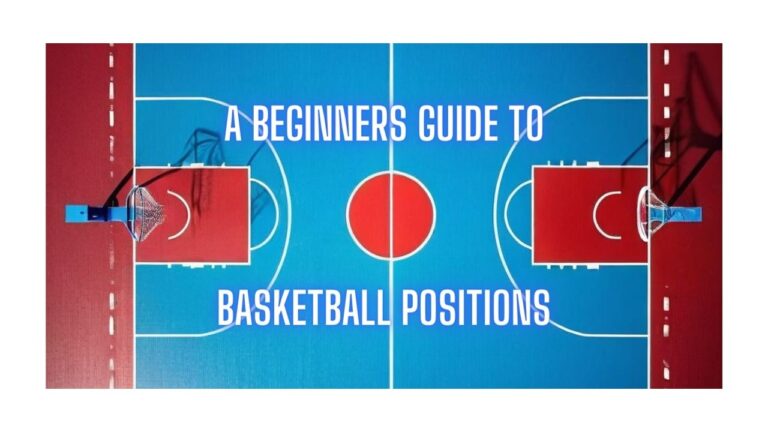How to Defend Ball Screens in Basketball

Great defensive teams don’t let screens (picks) disrupt their ability to shut down opponents. Ball screens, especially pick-and-roll plays, are among the most effective offensive strategies in basketball. A well-executed screen can create easy scoring opportunities, but strong defensive teams know how to counter them.
This article will break down three primary methods for defending ball screens: Switching, Trapping, and Hedging & Recovering. Each strategy has its strengths and weaknesses, and knowing when to use them can make all the difference in stopping an opponent’s attack.
1. Switching and Getting Under the Roll
Switching is a simple yet effective method, especially for teams with versatile defenders. A switch occurs when the defender guarding the ball-handler and the defender guarding the screener swap assignments.
Key Principles of Switching
Force the Ball-Handler to Use the Screen
The defender being screened must get shoulder to shoulder with the screener’s defender.
This forces the ball-handler to commit to using the screen rather than rejecting it.
Prevent the Roll
The switched-on-ball defender must get under the rolling screener to deny an easy path to the basket.
The switching defender must ensure that the screener doesn’t “slip” (cut early to the rim before setting the screen).
Stay Connected
The switching defender must prevent the ball-handler from attacking between them and the screener.
Effective switches maintain ball pressure and stop pick-and-roll or pick-and-pop plays.
✅ Ideal for teams with versatile, switchable defenders who can guard multiple positions.
✅ Effective against guard-to-guard screens where size mismatches are minimal.
✅ Helps eliminate defensive confusion by keeping defenders engaged with their new assignments.
Common Mistakes to Avoid
🚫 Switching Too Early – If defenders switch before the screen is fully set, the screener can slip to the basket for an easy score.
🚫 Mismatch Exploitation – Switching a small guard onto a dominant post player can lead to easy points in the paint.
2. Trapping and Rotating
Trapping a ball screen is an aggressive strategy that forces the ball-handler to make quick decisions under pressure. This can disrupt an offense and force turnovers.
Key Principles of Trapping
Positioning the Trap
The on-ball defender fights over the screen to prevent the ball-handler from escaping.
The screener’s defender steps out aggressively to form a “T” position with the screener, sealing off dribbling lanes.
Forcing a Retreat
The trap aims to push the ball-handler backward toward half-court, disrupting their rhythm.
The ball-handler should feel trapped between the two defenders, unable to pass or dribble easily.
Rotating & Anticipating Passes
Two help-side defenders act as “interceptors,” reading the ball-handler’s passing options.
One weak-side defender serves as a rim protector, ready to recover inside.
✅ Best for teams with quick, aggressive defenders who can pressure the ball.
✅ Effective in late-game situations when a turnover is needed.
✅ Useful against ball-handlers who struggle under pressure or make poor decisions.
Common Mistakes to Avoid
🚫 Weak Traps – If the trapping defenders don’t fully commit, the ball-handler can split the trap and attack.
🚫 Slow Rotations – If help-side defenders fail to react quickly, offensive players will get open looks.
3. Hedge and Recover: Slowing Down Attackers
The hedge and recover strategy is ideal for teams that lack versatile post defenders but need to slow down elite ball-handlers or challenge strong shooters.
Key Principles of Hedge and Recover
Hedge Defender’s Role
As the screener sets the pick, the defender guarding them must briefly step out (“hedge”) to disrupt the ball-handler’s path.
Their feet should be perpendicular to the screener’s, forming a “T” shape, with shoulders facing the sideline to prevent penetration.
Forcing a Retreat
The hedge should force the ball-handler backward, disrupting the offense’s timing.
This creates a window for the original on-ball defender to fight through and recover.
Reading the Ball-Handler
For penetrators: The recovering defender should go under the screen to cut off driving lanes.
For shooters: The defender must fight over the screen to contest a potential pull-up shot.
Quick Recovery & Help Rotations
Once the original defender recovers, the hedging defender must recover back to their man immediately.
If the offense runs a pick-and-pop, a help-side defender may need to rotate briefly before the hedge defender fully recovers.
When to Use Hedge and Recover
✅ Best against dominant scoring guards who use screens to create shots.
✅ Effective for teams without switchable big men who can’t guard the perimeter.
✅ Works well when help-side defenders are disciplined and react quickly.
Common Mistakes to Avoid
🚫 Hedging Too Aggressively – Overcommitting to the hedge allows the roller to slip behind the defense for an easy basket.
🚫 Slow Recovery – If the hedge defender doesn’t recover quickly, offensive players can exploit the delay.
🚫 Lack of Communication – Hedge and recover requires constant defensive talk to avoid breakdowns.
Final Thoughts: Which Strategy Should You Use?
Each of these defensive strategies has its strengths and weaknesses. The best approach depends on your team’s personnel, the opponent’s tendencies, and game situations.
Switching works best for versatile, switchable defenders and can shut down pick-and-roll actions.
Trapping is an aggressive, high-risk, high-reward strategy that forces turnovers but requires disciplined rotations.
Hedge and recover slows down elite scorers and protects the paint but relies on strong help-side defense.
Ultimately, the key to defending ball screens isn’t just knowing one method—it’s knowing when to use each method effectively. A well-prepared defense will have multiple strategies in place and the ability to adjust based on the flow of the game.
By mastering these techniques, your team can neutralize an opponent’s pick-and-roll offense and become a defensive powerhouse.
Frequently Asked Questions About Defending Ball Screens
1. What is a ball screen in basketball?
A ball screen (or pick) is when an offensive player sets a screen for a teammate handling the ball, helping them create space to attack, shoot, or pass.
2. Why is defending ball screens important?
Ball screens are one of the most effective offensive plays. If not defended properly, they can lead to open shots, easy drives, and mismatches that favor the offense.
3. What are the three main ways to defend ball screens?
The three most common defensive strategies are:
Switching (exchanging defensive assignments)
Trapping (double-teaming the ball-handler)
Hedging and recovering (briefly stepping out to slow the ball-handler before recovering to the screener)
4. How do teams decide which method to use?
It depends on the team’s defensive personnel, the strengths of the offensive players involved, and game situations. For example, teams may switch if they have versatile defenders but trap if they need a late-game turnover.
5. When is switching the best defensive option?
Switching is best when defenders are similar in size and skill, preventing mismatches. It works well in guard-to-guard screens or when defending against pick-and-pop shooters.
6. What are the risks of switching ball screens?
If defenders switch too early or without communication, it can create mismatches where a small guard is stuck on a big post player, leading to an easy scoring opportunity.
7. How can players switch screens effectively?
The defender being screened must stay connected and force the ball-handler to use the screen.
The new on-ball defender must immediately apply pressure to prevent easy drives.
The switching big must position themselves to stop a roll to the basket.
8. When should teams use a trap on a ball screen?
Trapping is best used against elite ball-handlers, especially those who struggle with pressure. It’s also a great strategy when a turnover is needed late in the game.
9. How do defenders properly execute a trap?
The screener’s defender steps out and creates a “T” position with the screener to cut off dribbling lanes.
The ball-handler’s defender fights over the top of the screen to prevent an escape.
Help-side defenders anticipate passes and rotate quickly.
10. What are the weaknesses of trapping?
Trapping requires fast defensive rotations. If defenders are too slow or out of position, the offense can easily pass out of the trap, leading to open shots.
11. What is a hedge in basketball defense?
A hedge is when the screener’s defender steps out momentarily to slow the ball-handler’s progress before recovering to their man.
12. When should teams use a hedge and recover?
Hedging works best against elite scoring guards who use screens to create shots. It’s also useful when a team’s big men aren’t quick enough to switch onto smaller guards.
13. What is the key to a successful hedge?
The hedge defender must angle their body towards the sideline to prevent the ball-handler from turning the corner.
The on-ball defender must recover quickly to avoid giving up open shots.
Help-side defenders must be ready to cover temporary mismatches.
14. What happens if the hedge defender recovers too slowly?
If the hedge defender takes too long to recover, it leaves the roll man open for an easy lob pass or a short jumper.
15. What are the biggest mistakes defenders make when switching screens?
Switching too early before the screen is fully set, allowing an easy slip to the rim.
Not communicating, leading to confusion and open shots.
Giving up a mismatch (e.g., a small guard stuck on a big post player).
16. How can defenders avoid getting caught in screens?
Stay low and anticipate the screen instead of reacting late.
Use physicality to fight over or under the screen.
Maintain communication with teammates to avoid breakdowns.
17. What should help-side defenders do when a screen is set?
Help-side defenders must recognize the screen early and be ready to rotate. Depending on the defensive strategy, they may need to:
Tag the roller to prevent an easy basket.
Intercept a pass if the ball-handler tries to escape a trap.
Recover quickly to their original assignments.
18. How can teams adjust their pick-and-roll defense mid-game?
Teams can mix up their coverages to keep the offense guessing. For example:
Switch against weaker ball-handlers to force tough isolation shots.
Trap against elite scorers to get the ball out of their hands.
Hedge against pick-and-pop threats to disrupt their rhythm.
19. What is an “ice” or “down” coverage in ball screen defense?
“Ice” coverage (or “downing” a screen) is when the on-ball defender forces the ball-handler away from the screen, pushing them toward the baseline instead of letting them use the pick. This limits scoring opportunities and forces tough mid-range shots.
20. How do NBA teams defend pick-and-rolls differently from high school teams?
NBA teams use multiple coverages based on matchups and scouting reports.
More switching happens in the NBA due to versatile, athletic defenders.
High school teams often rely more on hedging and trapping due to less experience handling defensive rotations.



